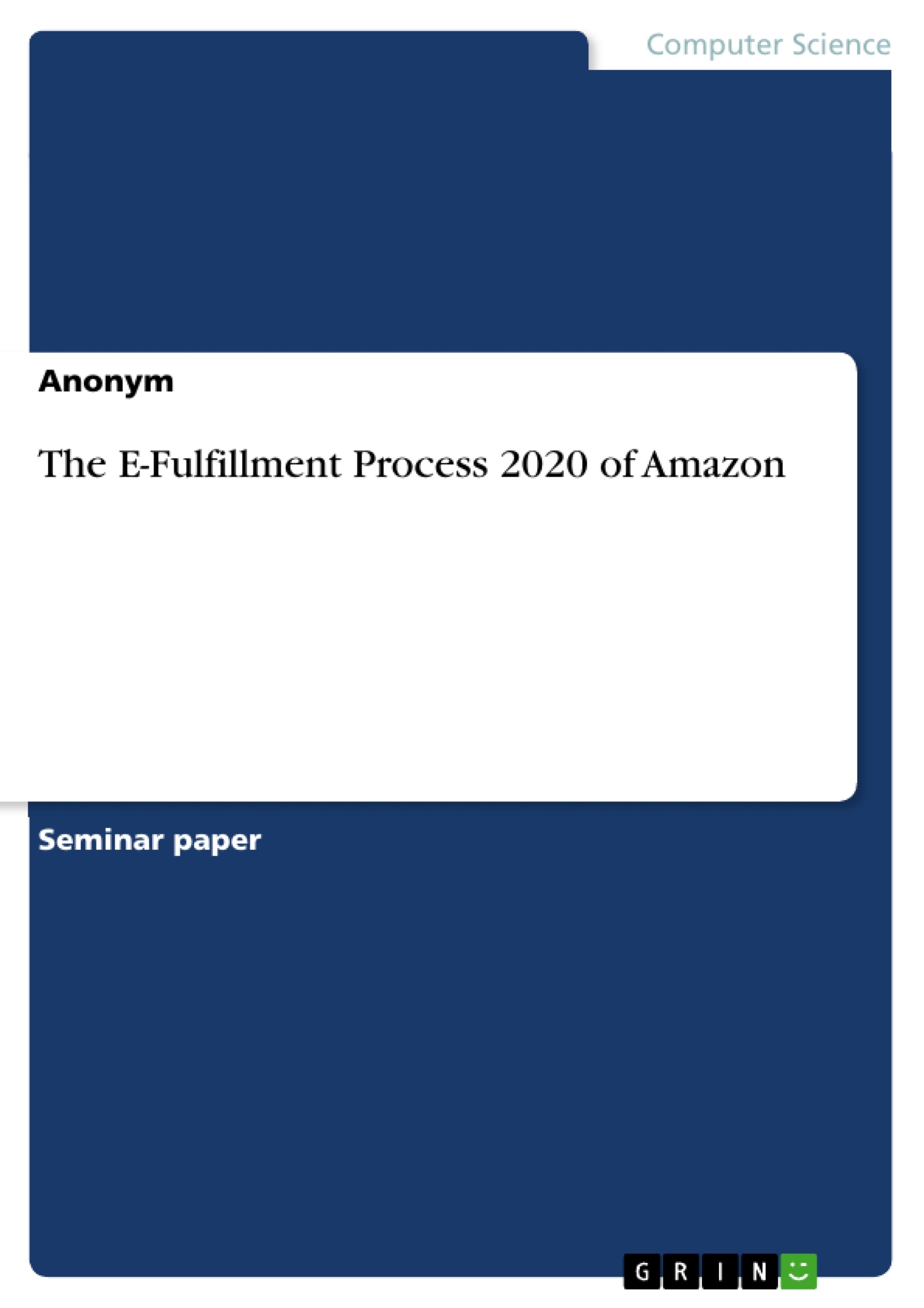This essay aims to define and explain the comprehensive e-fulfillment process in detail as well as its essential existence within e-marketplaces. The series of sub-processes making up the e-fulfillment process will be presented in the corresponding order of the four phases of transaction. Of all five sub-processes the e-matching process will be covered in further detail. “An e-marketplace (also called e-market, virtual market, or marketspace) is an electronic space where sellers and buyers meet and conduct different types of transactions.”. Taking this definition as a reference one can say that an e-marketplace serves as one of the possible platforms for transactions between providers and demanders in electronic-commerce. E-marketplaces differ in their strategy and layout and are composed of a variety of specifications such as branch specificity (vertical- and horizontal marketplaces), different pricing models such as e-auctions, dynamic- and fixed pricing as well as a selection of possible operator models.
Table of Contents
- Introduction
- Motivation and Aim
- Defining an E-Marketplace in E-Commerce
- The Relevance and Meaning of E-Fulfillment
- The Four Phases of Transactions and their Manifestation in the E-Fulfillment process
- Phase 1: Gathering Information - eSearch and eOffer Process
- The eSearch Process
- The E-Offer Process
- Phase 2: Reaching an Agreement - The eMatching Process
- Online-Catalog-Process
- Online-Request-Process
- Online-Auction-Process
- The Forward-Auction
- The Reverse-Auction
- Phase 3: Completing the Transaction - The eTransaction Process
- Phase 4: After Sales Service - The After-e-Sales Process
- Returns-Management
- Repurchase-Service
- Conclusion
Objectives and Key Themes
This essay aims to define and explain the e-fulfillment process in detail, focusing on its importance within e-marketplaces. The essay explores the e-fulfillment process as a series of interconnected sub-processes, each related to one of the four phases of a transaction. The e-matching process is examined in further detail.
- Definition and significance of the e-fulfillment process in e-commerce
- The four phases of transactions in e-commerce: information gathering, agreement, completion, and after-sales service
- The sub-processes within the e-fulfillment process related to each phase of transaction
- Detailed analysis of the e-matching process
- The role of e-marketplaces as platforms for transactions between providers and demanders
Chapter Summaries
The introduction defines the e-fulfillment process as a comprehensive procedure encompassing all sub-processes involved in completing transactions within e-marketplaces. It also defines the concept of an e-marketplace as a platform for online transactions and discusses its various aspects, such as different pricing models and operator models.
The second chapter delves into the four phases of transactions on e-marketplaces: information gathering, agreement, completion, and after-sales service. Each phase is linked to the e-fulfillment process and its corresponding sub-processes. The chapter provides detailed descriptions of the eSearch, eOffer, eMatching, eTransaction, and After-eSales processes. Within the eMatching process, specific examples of Online-Catalog-Process, Online-Request-Process, and Online-Auction-Process (including forward and reverse auctions) are examined. The e-fulfillment process is illustrated through diagrams that visualize the transaction flow on an e-marketplace.
Keywords
The key terms and concepts explored in this essay include e-fulfillment, e-marketplace, transaction phases, sub-processes, eSearch, eOffer, eMatching, eTransaction, After-eSales, e-commerce, online transactions, pricing models, operator models, provider-demander relationship, and marketplace logistics.
- Citation du texte
- Anonym (Auteur), 2020, The E-Fulfillment Process 2020 of Amazon, Munich, GRIN Verlag, https://www.grin.com/document/935496



